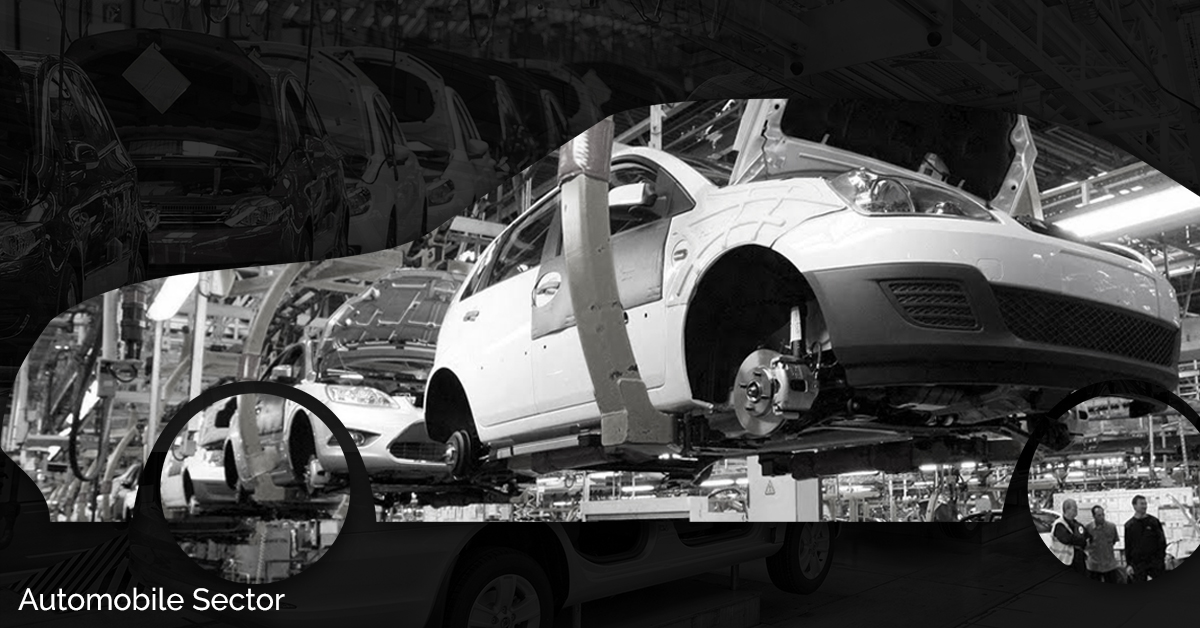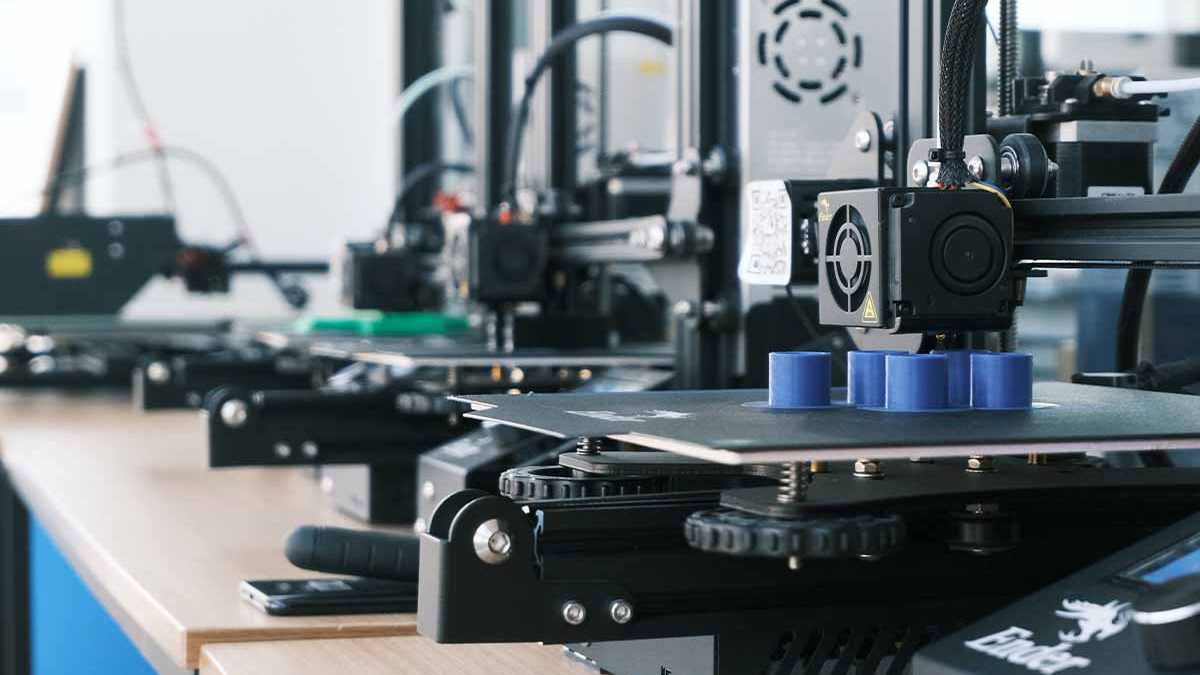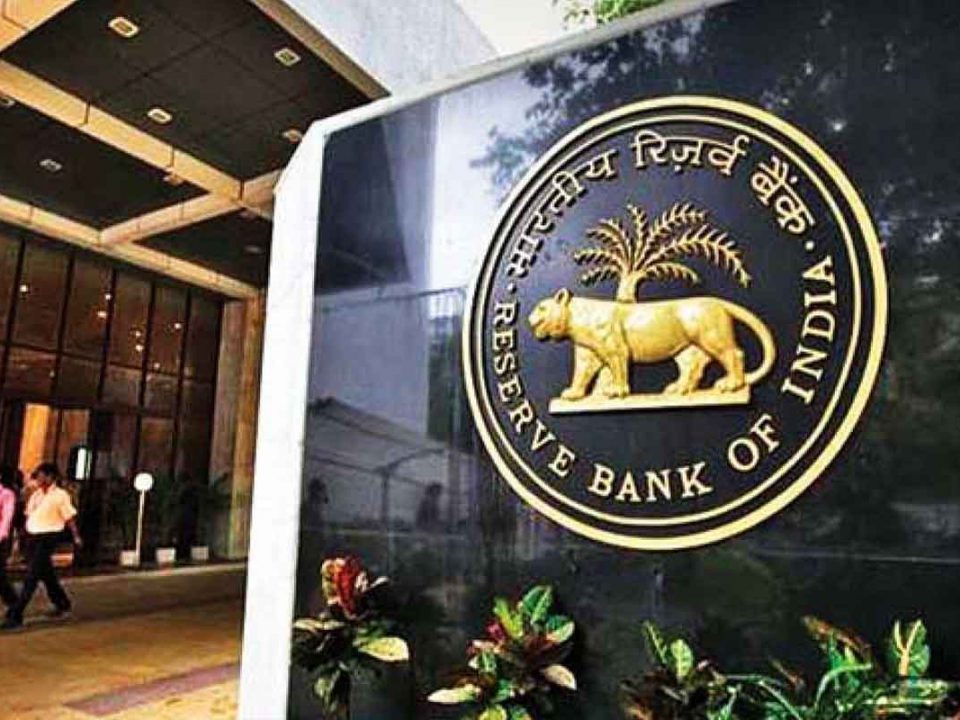Effect of COVID-19 on Indian Manufacturing Sector and Opportunities for Future Growth

Impact of International Trade on Indian Grassroots: Why India dissented from RCEP
December 24, 2019
Fundraising action plan for startups amidst the Covid-19 induced uncertainty
April 11, 2020Introduction
While the 2019-20 novel coronavirus pandemic has had several economic effects around the world due to various reasons, one of the major reasons comes from China being the world’s manufacturing hub. As the virus spread across China, which was the origin of this outbreak, factories across the country have shut down and logistics has been severely affected. As a lion’s share of many of the manufactured goods used around the world come from China, this meant reduced availability of goods around the world due to reduced production in the country and delayed arrivals due to logistics issues.
This has also affected India as many of the products consumed by customers as well as several raw materials, intermediates and components used by businesses in the country come from China. As a result, while the country’s authorities have done a phenomenal job in containing the spread of the virus within the country, the country’s economy has been hit as severely as other countries where the virus has spread a lot more. Most of India’s manufacturing units concentrate on making finished products for customers, whereas raw materials, components and intermediates are imported, and as a result, these units could not function either.
However, this pandemic has provided a major opportunity for India to increase its manufacturing capabilities as companies would look for production opportunities outside China. The manufacturing industry is also a massive job provider. It is estimated that every new job in the manufacturing sector has a multiplier effect and create 2-3 new jobs in the service sector [1]. This is invaluable for a country like India, which not only has an unemployment rate of 7.78% [2], but a high disguised unemployment rate especially in the primary sector and a large number of people working in a role they are overqualified for. Apart from this, India’s massive young population means that a million people enter the workforce every month and they all need new jobs. Therefore, India should grab this opportunity to bolster its manufacturing sector by both hands. However, in order to do this, India will need to make some policy changes that makes the country more business-friendly so that businesses pick India over other countries as their next manufacturing destination.
Pharmaceutical and Chemical Sector

India has often been labelled as the pharmacy of the developing world. This is because India is the largest producer of cheap generic drugs globally as well as one of the leading producers of low-cost vaccines. The Indian pharmaceutical industry was valued at $36.7 billion in 2018 and was expected to grow at a huge CAGR of 22.4% to reach $55 billion in 2020 [3].
However, the ongoing COVID-19 pandemic has severely affected the Indian pharmaceutical industry. This is because Indian pharmaceutical companies import several intermediates and active pharmaceutical ingredients (APIs) from China, which was the origin of the pandemic. While things are now improving in India’s eastern neighbour as the number of new cases is declining, leading to the re-opening of factories and restarting of production of these products, Indian pharma companies now have to rely on inventory and are in some cases, forced to reduce production. This can have long-term consequences as Indian pharma can lose out on market share to companies that are less dependent on Chinese intermediates and APIs.
Nine of India’s nineteen major pharma manufacturers have their own API manufacturing facilities, and only one of these companies produces intermediates [4]. In such a scenario, one of India’s best performing industries is heavily exposed to external factors not under its control for production. It is reported that around 70% of the country’s total API requirement is met by imports from China, which is the world’s leading manufacturer of APIs.
This can provide a massive opportunity for industries upstream of the pharmaceutical industry, such as the biotechnology industry, specialty chemical industry, petrochemical industry as well as the agriculture and agricultural products industry, the latter in case the active compound or an intermediate is sourced from a plant. At the same time, it also makes it necessary for pharmaceutical companies to backward integrate and set up more facilities for the manufacturing of APIs and intermediates. The benefits for companies upstream of the pharmaceutical industry such as the specialty chemical industry are immense, as they have ready buyers in the country who would purchase their products in large quantities and the cost to transport the goods would be minimal.
However, there are several challenges in this process. Building a large plant for performing chemical reactions is one that requires high initial capital expenditure and is also heavily regulated. Apart from that, India has major challenges when it comes to doing business that affect all businesses alike. This includes the large amount of red tape as a result of which businesses need to follow several procedures before they can begin operations, as a result of which India performs poorly in the Ease of Business index.
The Indian pharmaceutical industry has not only given the country significant revenues through exports but also brought the country goodwill, as millions of lives were saved around the world thanks to affordable medicine developed by Indian pharma companies. The best example is of Cipla developing their own combination of HIV antiretrovirals which would cost $1 a day [5], thereby making it affordable for several patients in sub-Saharan Africa which was the epicentre of the disease. In order to consolidate India’s position and reputation as the pharmacy of the developing world, the government will now have to incentivise production of chemicals and compounds across the entire pharmaceutical value chain in order to ensure the steady production of life-saving drugs by Indian pharma companies at affordable prices.
Electronics Sector

India is the second largest manufacturer of mobile phones in the world, behind China. This happened due to the massive jump in the number of manufacturing units for smartphones and allied products from 3 in 2014 to 268 in 2018. The low labour cost and abundant skilled labour has attracted several mobile phone companies such as Samsung and Xiaomi to set up shop in India. 82% of smartphones used in India are manufactured domestically. The Ministry of Electronics and Information Technology has set an ambitious target of $400 billion turnover in electronics manufacturing and producing one billion mobile handsets by 2025 [6].
However, this apparent strength in the manufacturing of mobile phones, this industry has been massively affected by the outbreak of COVID-19 in China. This is because while mobile phones are produced in the country, 87 per cent of the components are imported. Of these imported components, nearly three quarters comes from China [7]. For certain components like mobile phone display, nearly 90 per cent of it is imported from China. In most Indian manufacturing units, these components are imported and assembled to form the finished product. As a result, Indian mobile phone production is in dire straits as components are not arriving from China. This led to increase in price of many mobile phones and more delayed launches. This problem is not limited to mobile phones only, but also for other electronic gadgets such as laptops, set top boxes, printers and inverters. As important components such as printed circuit boards are primarily produced in China, manufacturing of all electronic appliances in the country were affected. Raw materials like aluminium and copper are also sourced from China [8].
One of the challenges of the electronics industry is that innovations happen at a rapid pace which makes components that are barely a few years old obsolete. This means that either Indian manufacturers will have to improve their R&D capabilities to industry standards or that industry leaders in electronics components will have to open manufacturing units in India, with the latter appearing more likely. In order to attract such companies to start manufacturing in India, not only should the ease of doing business in the form of reduced red tape be improved, but also the logistics sector as many of the raw materials like aluminium and copper need to be imported. A strong aluminium and copper recycling industry can also be built around the electronics industry in order to reduce the dependence on imported metal.
Mobile phones and other electronics items are extremely complex and require the assembly of hundreds, if not thousands, of components. India’s massive population and increasing digital penetration means that many of these products will eventually be used as finished products within the country. With the final assembly of mobile phones and other electronics goods happening in this country due to its large population, anyone who decides to manufacture electronics components will find a massive demand. Incentivising companies to produce electronics components in the country will lead to a huge increase in the number of manufacturing units and a significant jump in the number of jobs available to India’s young population.
Automobile Sector

India is the world’s fourth largest automobile market as well as the fourth largest automobile producer. Over 26 million automobiles were sold in FY19 while over 30 million automobiles were sold in the country [9]. This number includes all kinds of motorised vehicles including two-wheelers, three-wheelers, passenger cars and commercial vehicles.
However, not only do many motor vehicles companies, but also several Indian original equipment manufacturers (OEMs) source some of their components from China. 27 per cent of India’s auto component imports come from China. This number increases for more high value-add and customised components as commoditised components have alternate suppliers [10]. Passenger vehicles, two-wheelers and commercial vehicles were affected by the closing down of Chinese factories. Vehicles like tractors have high localisation levels and are therefore, less dependent on imports. The components that OEMs source include magnets, fuel injunction pumps, turbo chargers, LEDs, steering system components, air bag components, electronic components and electric vehicle components.
The coronavirus outbreak happened around the same time Indian OEMs were transitioning to BS-VI emission standards. Various new components, which were to be sourced from China, were required for transitioning into the new emission norms. The new emission norms would have increased costs and this along with the already reduced demand has led to a decrease in production which has now been amplified by the delay in arrival of components from China.
While there has been a slight decrease in automobile demand in the last one year due to lesser economic growth, this is expected to change in the longer term. Furthermore, with governments across the world including India planning on having only electric vehicles on the streets in ten years’ time, vehicles that run on fuel will have to be replaced with electric vehicles. India’s economic growth in the long term will lead to an increase in disposable income, and with that comes increased automobile sales.
In such a scenario, it would be extremely beneficial to the country if the entire value chain of the automobile sector is made in India. A company planning to produce auto components that are currently not produced in India will have several Indian OEMs willing to buy from them. However, in order to convince leading auto component manufacturers to set up shop in India, there should be provisions by the government to provide land where a manufacturing unit can be built and ensure that operations can be started without any excessive regulation and procedures.
Conclusion
A pandemic like COVID-19 is naturally expected to damage the economy the world over, as governments across various continents have issued lockdowns. However, it is necessary to ensure that Indian businesses are less exposed to disasters happening elsewhere, as that would minimise problems related to production. As China is getting back up with no local cases reported on March 19, factories are restarting operations and that is great news for Indian businesses since they were exposed to China and depended on Chinese factories for their raw materials. But as the disease is wreaking havoc in Europe and the United States, Indian businesses are worried about the reduced demand in these markets.
On the raw material side, the solutions involve developing more raw material in India and getting into relationships with multiple sellers from many different parts of the world, so that even if one important seller is affected due to a disease outbreak or any other disaster in that part of the world, a production unit in India will suffer less as it can procure raw material from a seller elsewhere. On the market side, the development of India as a market should be a long-term objective. As India’s disposable income increases, Indians will consume more than what they do now. This will only happen when more Indians have jobs that utilise their skills and growing the manufacturing sector would lead to this in the longer term.
It has been seen that coronavirus has especially affected those manufacturing industries that India is relatively stronger at such as pharmaceuticals, electronics and automobiles. This is because while the country does well in producing the eventual finished product, it does so by importing an intermediate or a component from China, and therefore, production has been affected by the unavailability of raw material.
This calls for the government to develop a new manufacturing strategy where not only finished goods are made in India, but also the entire value chain so that the country’s production units are not exposed to setbacks happening in other countries. In the case of pharmaceutical industry, that would include the active pharmaceutical ingredients and intermediates. In the case of electronics and automobile industry, that would include all the various components that need to be assembled in order to produce a functional gadget or vehicle. The production of these several new products in these value chains will lead to several new jobs that would reduce the unemployment level of the country. For those sectors in which India is not a strong manufacturing player, the country should ensure that in a strategy to develop manufacturing in that sector in India, the entire value chain is built and not just the final product.
This can be done by developing special economic zones catering to particular industries, in which the entire value chain will be manufactured. This will be extremely attractive to companies planning to set up new manufacturing units due to the ready availability of raw material and buyers of their finished goods.
References
- https://www.cii.in/sectors.aspx?enc=prvePUj2bdMtgTmvPwvisYH+5EnGjyGXO9hLECvTuNsfVm32+poFSr33jmZ/rN+5
- https://economictimes.indiatimes.com/news/economy/indicators/indias-february-unemployment-rate-rises-to-7-78-highest-in-4-months-cmie/articleshow/74434297.cms
- https://www.investindia.gov.in/sector/pharmaceuticals
- https://economictimes.indiatimes.com/markets/stocks/news/covid-19-outbreak-credit-neutral-for-pharma-companies-for-now-ind-ra/articleshow/74607886.cms
- https://www.thebetterindia.com/59280/affordable-generic-medicines-in-india/
- https://www.sundayguardianlive.com/news/india-now-worlds-second-largest-mobile-manufacturer
- https://www.thehindubusinessline.com/info-tech/coronavirus-keeps-indian-mobile-phone-industry-on-tenterhooks/article30867829.ece
- https://economictimes.indiatimes.com/small-biz/sme-sector/trade-in-the-time-of-coronavirus-sectors-overdependent-on-chinese-imports-face-a-grim-reality/articleshow/74312184.cms?from=mdr
- https://www.ibef.org/download/Automobiles-January-2020.pdf
- https://economictimes.indiatimes.com/industry/auto/auto-news/indian-auto-industry-to-be-negatively-impacted-supply-chain-disrupted-if-coronavirus-persists-icra/articleshow/74210052.cms?from=mdr
Authored by: Abheek Dasgupta, Associate
Contact details:
abheek.dasgupta@broublesome.com

About Intueri: Intueri Consulting is a management consulting firm with nearly 100 man-years of experience in managing organizational challenges, including managing firms and clients through some of history’s biggest crisis periods such as the 1997 Asian Financial Crisis, 9/11 led crisis, 2007-08 global financial crisis. This vast repository of organizational management experience, accrued by senior management, over decades of managing large multinational firms and clients enables Intueri to develop effective, efficient crisis management strategies and provides it with a unique perspective into events and decisions that take into consideration all important aspects of a firm, including assessment of primary, secondary and even tertiary order potential effects on the firm on account of implementation of strategies. Intueri has been helping organisations enter new areas within the chemical sector in order to diversify their product mix with the help of existing players who are looking to buy something they need or to sell something that they make. The firm has consultants with extensive domain knowledge both in the chemical and pharmaceutical sector.




